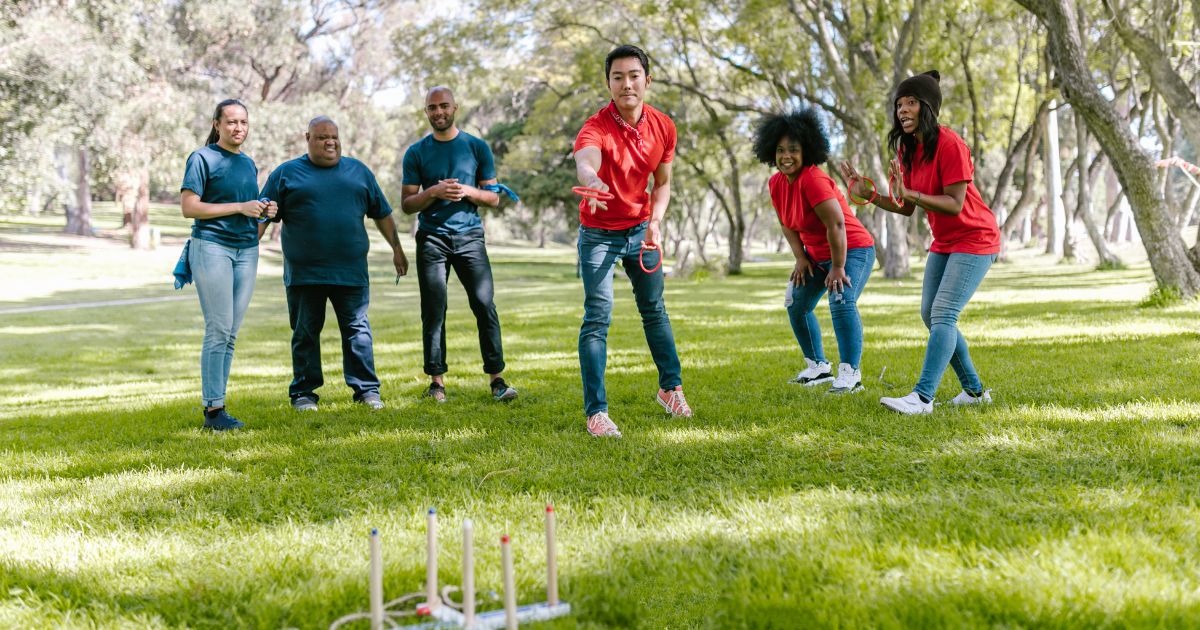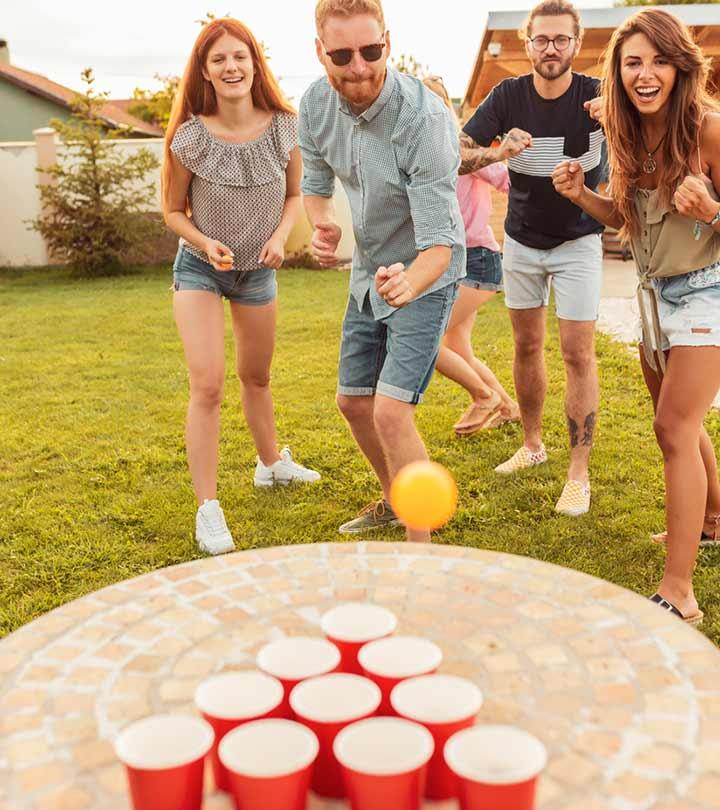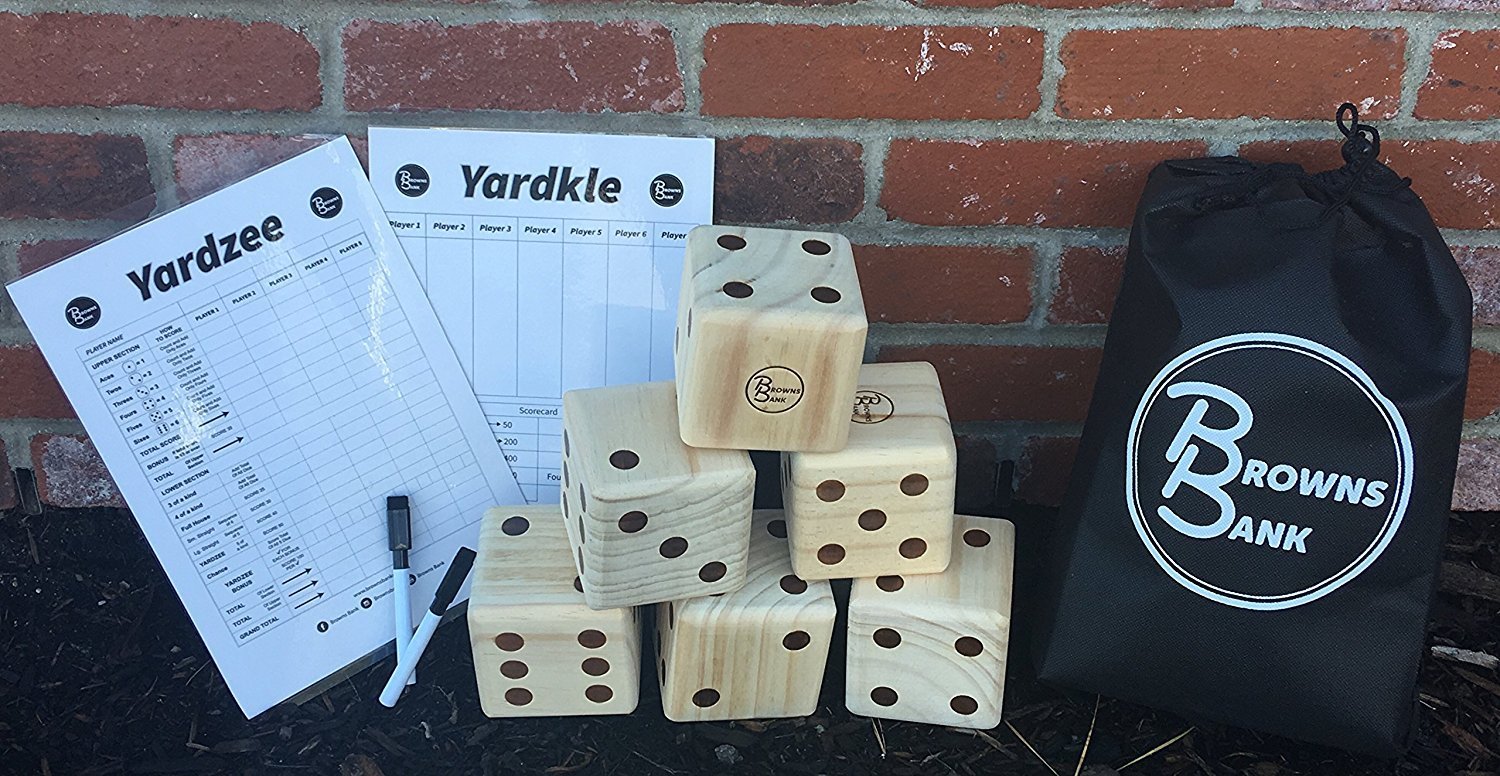Introduction:

A. Importance of outdoor games for adults In today’s fast-paced and technology-driven world, adults often find themselves glued to screens, neglecting the importance of engaging in physical activities. However, outdoor games offer a multitude of benefits for adults, including improved physical and mental health, increased social interaction, and a break from daily life. B. Advantages of playing games without equipment The beauty of outdoor games lies in their simplicity and the fact that they can be enjoyed without the need for any special equipment. This allows individuals to participate in the games spontaneously, without any prior planning or investment.
Ⅱ.Competitive Outdoor Games:
A. Tag games
Tag games have been entertaining people of all ages for centuries. They not only provide a great source of exercise but also bring out the inner child in adults. Here are three popular variations:
- Classic tag This timeless game involves one person being “it” and trying to tag the other participants. Once a player is tagged, they become “it.” The game continues until everyone has been tagged or when the predetermined time limit expires.
- Freeze tag Similar to classic tag, freeze tag adds an extra element of challenge. When a player is tagged in freeze tag, they must freeze and can only resume play when another player touches and unfreezes them. The game continues until all players are frozen.
- Blob tag Blob tag is a twist on traditional tag where each person tagged joins forces with the “it” person to form a growing blob. The blob can stretch and tag players, making it harder to escape. The game ends when everyone has been tagged and joined the blob.
B. Relay races

Relay races are dynamic and high-energy competitions that require teamwork and coordination. They ignite the spirit of competition while ensuring maximum fun. Below are three classic relay race options:
- Three-legged race In this amusing race, participants pair up and have one leg tied to their partner’s leg. The challenge is to run, hop, or shuffle together to reach the finish line without falling or losing balance.
- Wheelbarrow race Participants form pairs, with one person acting as the “wheelbarrow” and the other as the “handler.” The handler holds the wheelbarrow participant’s legs and races to the finish line, relying on coordination and trust.
- Egg and spoon race Each player balances an egg on a spoon and races to the finish line. The catch is that they must maintain balance and prevent the egg from falling off the spoon. If the egg falls, the player must start from the beginning.
C. Tug of war
Tug of war is a thrilling team-based outdoor game that promotes strength, strategy, and unity. This traditional contest has been enjoyed for centuries. Here’s how to set it up and some tactics for winning:
- How to set up a tug of war game Mark a central line on the ground and divide participants into two teams, with an equal number of players on each side. Each team holds one end of a long rope, and the objective is to tug the rope to bring the opposing team over the central line.
- Strategies for winning
- Ensure an equal distribution of strength along the rope to provide a balanced force.
- Focus on timing and synchronization when pulling, as a unified effort is key to success.
- Utilize techniques like leaning back, digging in heels, and using body weight to gain an advantage.
III. Cooperative Outdoor Games

A. Capture the Flag
Capture the Flag is a thrilling outdoor game that promotes teamwork, communication, and strategy. Here’s a breakdown of the rules, objectives, and key elements of this classic game:
- Rules and Objective The game requires two teams, each with their own “flag” or designated object placed in their respective territory. The objective is for each team to capture the opposing team’s flag and bring it back to their side without getting tagged by the defenders. The first team to successfully capture the flag wins the game.
- Teamwork and Communication Capture the Flag heavily relies on teamwork and communication to succeed. Players must strategize, assign roles, and devise plans to protect their own flag and capture the enemy’s flag. Clear communication is crucial to coordinate attacks, defense strategies, and flag retrievals.
B. Scavenger Hunt
Scavenger hunts are exciting outdoor games that offer a blend of adventure, problem-solving, and collaboration. Here’s a breakdown of planning and setting up a scavenger hunt:
- Planning and Setting Up The first step is to plan the scavenger hunt by creating a list of items or clues for participants to find. Consider the location and age group of the players to tailor the difficulty level accordingly. Designate various checkpoints, hiding spots, or clue locations where participants will find the next set of instructions or items.
- Themes and Variations Scavenger hunts can be customized with different themes, such as nature, history, or specific subjects of interest. Incorporate puzzles, riddles, or physical challenges to engage participants and make the hunt more exhilarating. Consider adding time constraints or providing rewards for completing the hunt quickly or accurately.
C. Group Storytelling

Group storytelling is a creative and collaborative outdoor game that encourages imagination and teamwork. Here’s how you can create a collective story:
- Creating a Collective Story Start by forming a circle with the participants. One person begins the story with a sentence or a few words and passes it to the next person in the circle, who continues the narrative. Each participant adds a new element or builds upon the previous contribution, forming a unique and imaginative story collectively.
- Enhancing Creativity and Collaboration Group storytelling promotes creativity and collaboration as participants actively listen to each other’s contributions and build upon them. Encourage everyone to contribute to the plot, add characters, and introduce unexpected twists. This game sparks imagination and strengthens bonds among participants.
IV. Active Outdoor Games
A. Simon Says
Simon Says is a classic outdoor game that can be adapted to incorporate physical challenges. Here’s how you can enhance the game:
- Adding Physical Challenges and Movements Incorporate physical movements or exercises into the Simon Says commands. For example, “Simon says do ten jumping jacks” or “Simon says hop on one foot.” This adds a physical component to the game, promoting exercise and coordination.
- Increasing Difficulty Levels Increase the difficulty as the game progresses by incorporating more complex or challenging movements. This keeps players engaged, physically active, and tests their ability to follow instructions accurately.
B. Duck, Duck, Goose

Duck, Duck, Goose is a traditional outdoor game that can be spiced up with twists and variations. Here’s how you can add excitement to the game:
- Traditional Game with Physical Components In the traditional version, players sit in a circle and one person walks around, tapping each player’s head and saying “duck.” Eventually, they tap a player’s head and say “goose,” and that player must chase them around the circle to try and tag them before they sit in the empty spot. To add a physical element, encourage players to incorporate exercise movements while walking or running, like lunges or high knees.
- Adding Twists and Variations Introduce variations to keep the game fresh and exciting. For example, instead of just saying “duck,” players can use animal names or imitate the sound of the animal they tap. This adds a fun and humorous element to the game.
C. Red Light, Green Light
Red Light, Green Light is an engaging outdoor game that focuses on listening, quick reactions, and exercise movements. Here’s how you can incorporate these elements:
- Focus on Listening and Quick Reactions In Red Light, Green Light, one person acts as the “traffic light” and stands at a distance from the other players, who line up. The traffic light faces away from the players and says “green light” to signal them to move forward. However, when the traffic light says “red light,” they quickly turn around, and any player caught moving must go back to the starting line. Emphasize the importance of attentiveness and quick reactions to succeed in the game.
- Incorporation of Exercise Movements To make the game more physically challenging, incorporate exercise movements that players must perform when the traffic light says “red light.” For example, instead of freezing, they could perform jumping jacks or squats until the traffic light says “green light” again. This adds an additional layer of physical activity to the game.
Conclusion:
Cooperative and active outdoor games provide adults with opportunities to bond, exercise, and unleash their creativity. From the strategic teamwork required in Capture the Flag and the thrill of completing a scavenger hunt, to the imagination and collaboration fostered by group storytelling, these games offer countless hours of fun and excitement. By adding physical challenges to games like Simon Says and Duck, Duck, Goose, and incorporating exercise movements into Red Light, Green Light, individuals can ensure an active and energizing experience. So, step outside, gather your friends, and embrace the joy of cooperative and active outdoor games—it’s time to unleash the fun!
